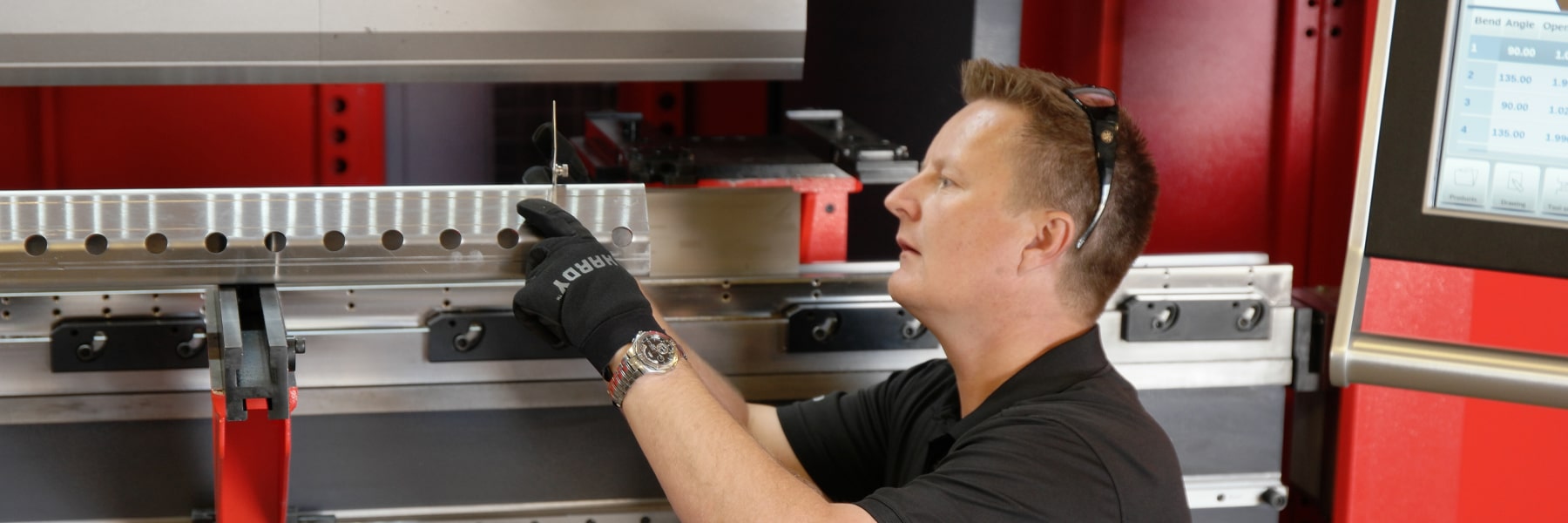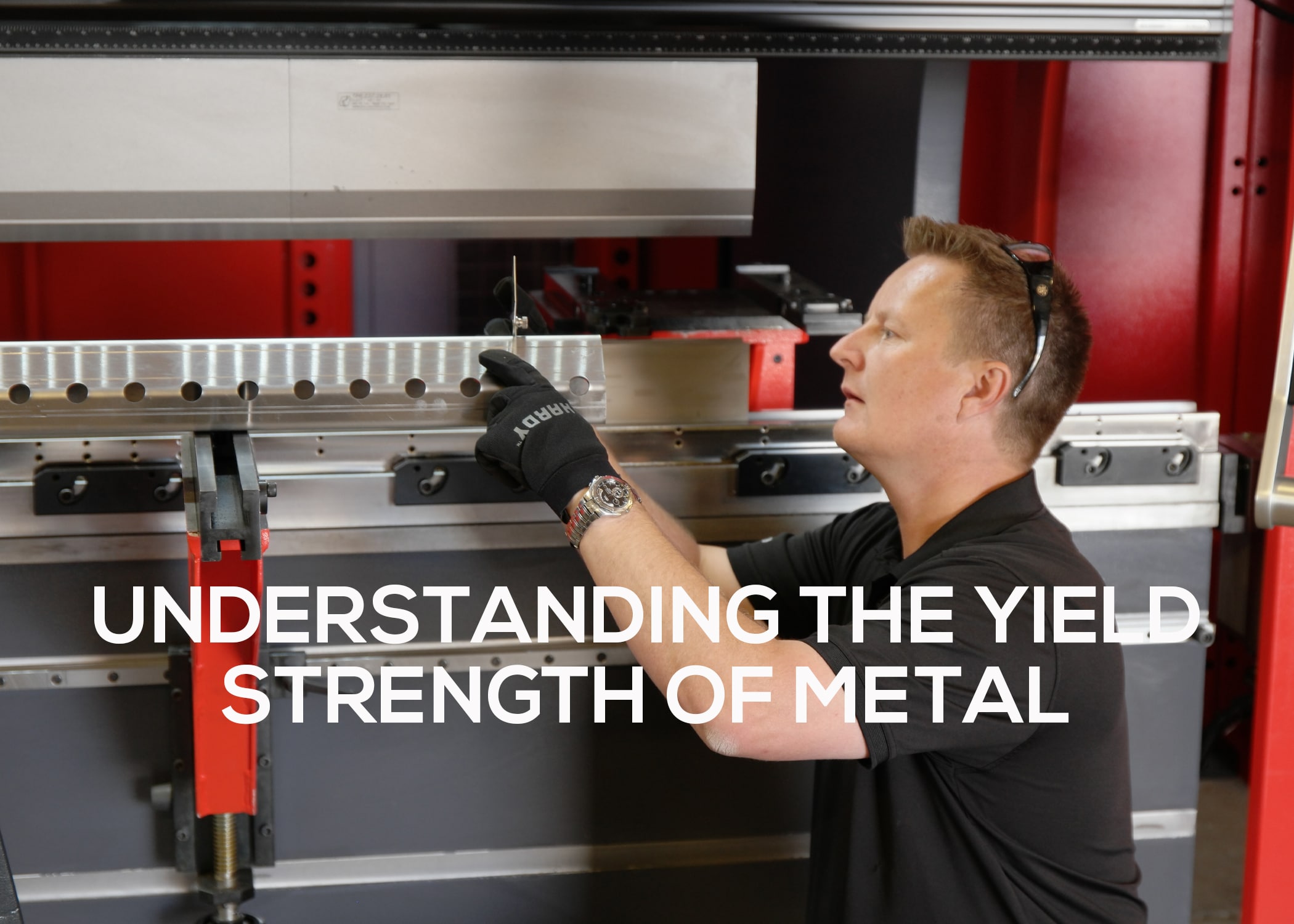Metallurgy 101
It doesn’t take a new press brake operator long on the job to realize that mastering the art of metal bending requires a bit more than comprehending how to press a button. While a CNC machine takes much of the guesswork out of the process of forming a specific part from a workpiece, the operator who wants to advance and become a true metal fabricator needs to start studying some of the basics of metallurgy (yield strengths) and why different metals react the way they do under various conditions.
An early lesson that plate roll and press brake operators learn is how to deal with the issue of springback. As its name implies, springback refers to the way material that has been rolled or bent will attempt to open and spring back towards its original prefabricated shape. Though metal seems to the casual observer to be a rigid, solid substance, most common structural metals like steel, aluminum, copper, and titanium are quite elastic, meaning they will bend under a certain load and then revert when the load has been removed.
When enough load is applied, however, a change takes place in the material, with some of the deformation becoming permanent. The part of the deformation that remains elastic is the cause of springback. Operators will usually compensate for springback by overbending on a press brake to a smaller angle or over rolling on a plate roll to a tighter diameter, allowing the material to “loosen” to the desired radius when the load is removed.
One of the areas the serious metalworker needs to understand is the different kinds of “strengths” a given type of metal will possess. For example, a metal can be hard but not necessarily be considered strong since it can also be brittle. Hardness is how resistant a metal is to penetration, so a material like AR400 steel plate used to construct a dump truck bed will likely be able to withstand the impact of large rocks, but the process of forming it must be carefully executed so that it doesn’t crack under the constant pressure during fabrication.
A common gauge of strength in metal is tensile strength, which is how resistant it is to failure (breaking) when put under tension, such as during a fabrication process that would bend or stretch it. A different measurement is known as yield strength, which designates the highest stress a metal can take before permanent change sets in and some of its elasticity is lost. Understanding the yield strength of various metals is a critical skill that fabricators must acquire to be effective in their work.
Point of No Return
While factors such as yield and tensile strengths play a role in determining whether a certain metal will have practical use as a component, the immediate need for a metalworker is to know how much stress or pressure can be brought to bear on a piece of metal before each limit is reached. For bending, rolling, or similar fabrication operations to take place, the metal of the workpiece must pass the first limit of yield strength without approaching too closely the final limit of tensile strength.
While the average consumer might view the words elastic and plastic as referencing seemingly similar components found in everyday goods, in engineering the terms take on significance as descriptions of different types of deformation that can take place in a material. True elasticity means the material will revert to its original form when an amount of stress has been removed, but plastic deformation means that a point of no return has been crossed where the stress is sufficient to cause a permanent change.
A correlation exists between the amount of stress that is placed on a piece of metal and the amount of strain (or deformation) that remains in the metal when the stress ceases. This relationship can be graphed as a continuum from the point where stress begins to be applied to the point where the metal ultimately fails. As stress begins to build, the metal enters the elastic phase of deformation, which is graphed as a straight diagonal line because of the proportional correlation that exist between stress and strain. The line begins to curve slightly at a point known as the proportional limit, even though elasticity remains.
Once the stress reaches a boundary known as the elastic limit, the metal enters the plastic phase of deformation, and the graph line increases in its curvature. Another term for the elastic limit is the yield point, as it is the place where the material begins to yield (give in) permanently to a new shape. The magnitude of the stress at this location is the yield strength of the material.
Given that the exact transition point from elastic to plastic is difficult to identify in many materials due to its gradual onset, an offset method is frequently used to define yield strength. Offset yield—also called proof strength—is represented by a value indicating the percentage of plastic strain at that point, often 0.2%. It is charted by drawing a new line on the graph that starts at the given percentage of strain and runs parallel to the original straight section of the stress-strain line. The new line intersects the original one at a more clearly definable point after the gradual curving of the stress-strain line has become more pronounced, providing a more consistent and reliable method for establishing yield strength.
Due to the crystalline structure of some metals like mild steel, they will possess both an upper yield point—where plastic deformation starts—and a lower yield point—where strain hardening begins. Because the lower yield point is more stable in nature than the upper point, it is generally used in structural engineering for design calculations.
Metal Yield Strength Examples
Every solid material can be measured for strength. Some inflexible materials like concrete and marble don’t have yield strengths, but since they can break, they do have specific tensile strengths. Human skin has a yield strength of 15 MPa (megapascals) while Kevlar is 3620 MPa.
Just to illustrate the wide range of yield strengths in metal, the following are some approximate yield strengths for several metals, shown from lowest to highest:
- 9-14 MPa — Annealed Tin
- 15-20 MPa — Annealed Aluminum
- 33 MPa — Annealed Copper
- 35 MPa — Aluminum
- 70 MPa — Copper
- 100-225 MPa — Annealed Titanium
- 125 MPa — UNS C93200 Bearing Bronze
- 140 MPa — UNS C28000 Brass Alloy
- 210 MPa — AISI 1020 Hot-rolled Steel
- 241 MPa — Alloy 304L Stainless Steel
- 241 MPa — 6061-T6 Aluminum Alloy
- 250 MPa — ASTM A36 Hot-rolled Mild Steel
- 295 MPa — AISI 1020 Annealed Steel
- 350 MPa — AISI 1020 Cold-drawn Steel
- 370 MPa — AISI 1018 Mild Steel
- 414 MPa — 2014-T6 Aluminum Alloy
- 448 MPa — API 5L X65 Steel
- 450 MPa — Titanium
- 520 MPa — AISI 302 Cold-rolled Stainless Steel
- 550 MPa — Annealed Tungsten
- 565 MPa — Molybdenum
- 690 MPa — ASTM A514 High-strength Alloy Steel
- 1620 MPa — AISI 4340 Oil-quenched and Tempered Steel
- 1725 MPa — Tungsten
Alloys like steel have no single yield strength—the strength of each variation depends on the percentages of alloying elements in the mix, as well as the procedures used to create them. Heat-treating processes such as annealing, tempering, hardening, and normalization will all influence the final yield strength of a metal.
Making Metal Yield
The job of the metal fabricator is to literally make metal yield to his or her will. Learning how to properly overcome the yield point of a workpiece without causing metal fatigue or failure is a skill that grows as each metalworker continues to practice their trade.
Along with understanding the yield strength of different metals, the fabricator must learn about such concepts as elongation, ductility, fatigue strength, tensile strength, shear strength, impact strength, and compressive strength. As their knowledge and mastery over metal increases, fabricators will reach the point where they graduate from the ranks of mere manual laborers and transform into true artisans of metal.







